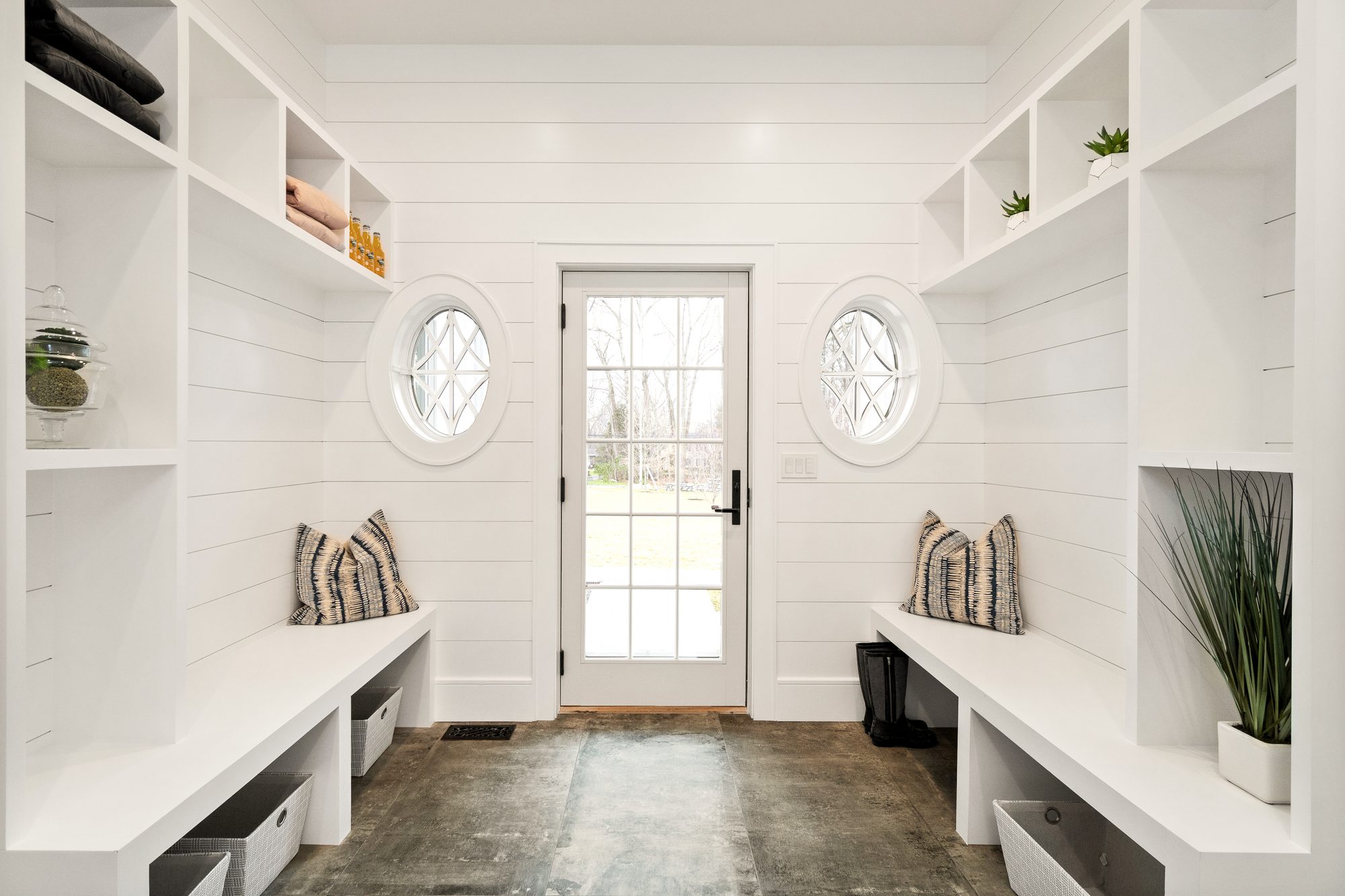How To Water Succulents
A question I get asked all the time is, how to water succulents? You may have noticed when looking through the pictures in our articles that we use a ton of them. We recommend them to many of our clients and use them in most of our interior design work. We just love them, but like any other plant, proper care and watering are important.
While succulents are a really popular house plant, most people don’t know much about them or what it takes to care for one. Hopefully, this article will give you an understanding of what succulents are and how to water them properly. Succulents are a group of plants that store water inside their leaves. There are hundreds of different plants that qualify as a succulent but not all are used as a house plant. Their leaves are generally thick and fleshy which helps them store water and nutrients for so long. Succulents tend to thrive in dry climates and don’t really like a lot of humidity. Like all plants, succulents need water to ensure the best health and flowering.
Succulents can survive for quite a while without water which is why they thrive in the desert. They store water and nutrients in their leaves and roots which makes them a hardy plant. It’s one of the reasons they’re so popular as a house plant. If you don’t have a green thumb then succulents may be the ideal plant for you.
If a succulent’s roots sit in water for too long they can start to rot and die. So over watering is just as much a problem as under watering. How to water succulents is a very important question to answer if you plan on using them in your home. They’re a beautiful little plant and while they’re quite hardy, they still need proper care in order to thrive.
Watering your succulent plants properly is an important part of helping them thrive indoors.
How To Water Succulent Plants
Succulents aren’t like most other plants because they can survive on a lot less water. They’re natural environment is very dry and hot, desert like in some instances, so that’s what they need to survive. A succulent isn’t going to change just because you put it in a pot. Being from a desert climate gives them special needs that you have to reproduce as closely as possible. Too much water can actually be worse for a succulent’s heath as too little. If you want them to not only survive, but also thrive, then you have to water them properly.
Caring for a succulent means learning not only how to water them but also when and how much.
Because succulents don’t need much water to live but react badly to over watering, many people consider them hard to care for. But with the simple watering method we’re going to teach you below, you’ll see just how easy succulents actually are to care for.
Simple Method For Watering Succulents
The best way to water succulents is by soaking and drying them, not just pouring a ton of water in like most other plants. It’s easy to do and works so well because it recreates a succulents natural watering conditions in the wild.
Soak the soil completely then let the soil dry completely before watering again. Make sure your succulents are planted in a well draining soil and in a pot with a drainage hole at the bottom.
Try not to let water pool on the leaves for too long or it can cause rot. In their natural hot and dry climates pooled water would quickly evaporate so that’s what they’re used to. After you water the succulent dry the leaves of any excess water.
Use a watering pot with a small spout about the size of a straw. I use something that looks like an oil can. The design lets me pour water wherever I need it without getting any on the leaves.
Try to pour water onto the soil all around your succulent until it’s completely soaked. DO NOT water your succulents again until the soil has completely dried out from the top of the soil to the very bottom.
Succulents do not like to sit in wet soil for more than a few days because that’s not their natural environment.
Succulent plants are a great decoration for your kitchen countertop. This small white pot and wood stand are a charming addition. Just make sure you water them.
How Much Water Do I Give A Succulent Each Watering?
Rather than giving your succulents small sips of water a few times a week, give them a lot of water at once every 10-14 days. Soak them to the point where the water runs out the drainage holes at the bottom of the pot.
Be sure to empty the water that runs out of the drainage hole and collects into the saucer beneath the plant pot. Then let the soil dry out completely before watering again. Check the soil with your finger a week after watering. If it’s still moist then don’t water again until it’s dry.
Vary Water Levels By Season
Succulents need more water in spring when the plant is growing than they do in Winter or Summer months. This could drop down to as little as once a month in some cases.
What we recommend is watching your plant a little closer as the seasons change and making a note of their needs. If your sticking to your watering schedule and notice the leaves are getting a little wrinkled then back off a bit. When it comes to succulents and water, less is more.
The frequency of watering will also depend on the size of the container and the soil.
- The larger the container, the more moisture it can hold.
- Small, shallow pots may need to be watered more frequently.
- We recommend using gritty soil that drains well which is very different than watering potting soils that hold water.
Remember, don’t water your succulents until they need it. Check to make sure the soils is dry.
How To Check A Succulents Water Level?
Remember, you should not water your succulent again until the soil is dry. But how do you know?
It’s easy, stick your finger down into the soil and check. One of the benefits to using a gritty, almost rocky soil is that you can stick your finger in it. If you can’t wiggle your finger into the pot then your soil isn’t gritty enough. You’ll be able to feel if the soil is still wet or not. Try to get s far down as you can.
Another method is to stick a wood stick like a chop stick down into the pot. Twist it around and let it absorb water. The reason we use a wood stick is because wood soaks up water quickly. When you remove the chopstick you’ll be able to see and feel it for moisture. This methods works fine if you don’t want to get dirty but we prefer the finger method.
You can also check from the bottom drainage hole. Lift off the screen cover and stick your finger in a little, if it’s dry all the way down there then the soils ready for more water.
What Time Of Day Should I Water My Succulents?
One of the most overlooked rules when it comes to watering succulents is the time of day. Don’t ask me why this makes a difference but the time of day you water your succulents seams to matter.
Try to water your succulents each morning before 11 am. The earlier the better.
I think this is because it mimics the way they’re watered in nature. Generally in hot and dry climates they see water in the mornings which quickly drys out by noon. It’s what the succulents are used to and what they seam to like.
Although it’s not a huge issue. We’ve watered succulents for one reason or another much later in the day and they’ve never had any problems from it. But over time the plants seam to respond and grow better when they’re watered early in the morning.
Succulent plants make a great addition to just about any room of the house. Just make sure to water them properly.
How Often Should I Water My Succulents?
Succulents should be watered only when the soil has completely dried out. That’s from the top of the soil all the way down to the bottom of the pot. There’s no universal rule for how much or how often to water every succulent. There are hundreds of different kinds so there’s gonna be some differences between species. You’ll need to get to know your plants needs and then vary your water scheduling a bit.
Although there are lots of small differences there are still some universal watering truths that all succulents seam to follow.
We’ve found that watering every 10-14 days is a good rule of thumb to keep your succulents alive and well. Use this timeline as a starting point and then adjust as needed.
Make sure to water your succulents as soon as the leaves show even the slightest signs of under watering. No matter what your predetermined watering schedule says, if the leaves are starting to show any signs at all that the plant needs water then give it some.
Since most succulents are very prone to rot when over watered, you should wait for a signal from your succulent before watering. Just make sure to water them as soon as you see the signs. That’s why we give a range of 10-14 days and not an absolute time table. Once you’ve cared for a succulent for a while you’ll get to know it’s needs.
Remember, don’t water again until the soil is totally dry. Ideally, the soil will be completely dry in that 10-14 day range.
Why This Watering Method Works
The reason this method of watering works so well is because it mimics their natural environment. Most succulents come from an environment with soil that drains very quickly and where it rains fast and heavy but infrequently. Think desert conditions. It’s not uncommon to get heavy rains for an entire day and then nothing at all for 2 weeks. The soil is sandy, rocky and doesn’t hold water very well. Succulents thrive in environments just like this.
While your succulents can survive in these harsh conditions, they don’t need a watering schedule this extreme. But they benefit from a soak and dry approach because it mimics their natural conditions.
With a deep and thorough watering your succulent has plenty of water to absorb. During the 10-14 day drought between watering, your succulent can grow new and deeper roots which search for more water. Developing a large, healthy root system helps it withstand longer periods of drought than most other plants. Cactus are a form of succulent and a great example that really thrives in these harsh desert environments.
Constant watering with small amounts of water, for example spraying them with a water bottle a few times a week like other plants, will produce a weak root system that can’t withstand very long periods of drought. So don’t do it.
Don’t water a succulent like you do your other plants because they’re not like your other plants.
Mist Your Succulents Leaves
You should never water your succulents with a spray bottle. Water that pools on the leaves will cause rot. Their natural environment is very dry and hot so water quickly evaporates off of them.
We don’t recommend misting the plants as a way to water them but rather a way to clean the leaves. My grandmother taught us as kids to clean your plants leaves because dust can build up and prevent them from soaking up sun. Ever since then I’ve made a habit out of cleaning my plants leaves periodically.
For your regular plant it’s not an issue if some water gets left behind on the leaves but it is for a succulent. When and if you clean the plant make sure to gently wipe down the leaves until they’re totally dry.
This doesn’t work for all succulents. I wouldn’t recommend misting and wiping down a cactus. But for many indoor succulent plants this works great.
Don’t overdo it. This isn’t something you’ll need to do that often unless your house is really dusty. I probably clean my succulents leaves a few times a year.
Succulents Need The Right Soil For Watering
Succulents should be planted in a well draining soil AND in a pot with a drainage hole at the bottom.
They’ll rot pretty fast if they’re in wet soil for too long so drainage is important. Ideally the soil should be mostly dry within 2-3 days after watering them, especially the top half of the pot.
The soil succulents like best is gritty, not sandy or fine like dirt. In fact I wouldn’t even call it dirt. It’s more like rocky beach sand than dirt. And definitely don’t use any kind of potting soil. Your succulent’s soil should have a mix of 1/3″ (6mm) particles, 2/3 of the soil should be inorganic (rock) and 1/3 should be organic.
Traditional soil doesn’t work very well for succulents because it stays wet for too long. Potting soil is good for most plants because it holds water for a long time but that’s the opposite of what a succulent needs.
I don’t recommend using most of the Cactus and Succulent soils found in most stores either. They tend to be too organic and don’t drain fast enough. Although they’re better than using regular soil. We’ll be posting another article on how to make it yourself with a video soon so check back.
If you’re new to succulents or have killed some in the past then I recommend learning how to make your own soil. Another option is to buy some at the store and then alter it a little. Most of the brands tend to need a little more grit.
No matter where you put your succulents make sure you don’t forget to water them as needed. These two tiny succulents are a great addition to this mudroom.
Use A Pot With A Drainage Hole
Another important thing to remember is using a pot with a drainage hole at the bottom.
Succulents don’t like to sit in wet soil for long. A drainage hole at the bottom makes it easier for excess water to drain out of the soil. It’s a more natural watering method because in the wild water drains deep into the soil, there’s no hard surface under the succulent to trap moisture.
The hole in the bottom of the pot allows excess water to flow out of the pot and away from your succulent’s roots. It also lets a little air flow under the soil which helps dry things at both ends.
A pot with a drainage hole is a big help but you do have to put something under the pot so water doesn’t spill onto a fine surface.
How Do I Water Baby Succulents?
It’s okay to use a spray bottle for watering your baby succulents when you’re propagating. This is just about the only stage when doing this is OK.
If your propagating baby succulents indoors feel free to water them just about every day.
Spray the top of your soil with a spray bottle. Just like the roots of a large succulent plant, the baby leaves will absorb water from the air around them. Spraying the soil with a spray bottle usually gives them enough water.
During this stage you should watch your roots and leaves carefully. If you see any signs of drying out then that means they need a little more water. Increase the amount of water you give them a little at a time. Too much at this stage and they’ll rot.
Pay Careful Attention When Watering Succulents
Now that you know the soak and dry method you should have any problems caring for your succulents.
Pay close attention to the signs your succulent is giving you. It will start to change depending on if it needs more water or less water. Alter your watering schedule accordingly. With a new plant it can take a little time until you nail down just the right schedule.
A common sign that your over watering could be a wrinkling of the leaves. It looks kind of like fingers that have been in water for too long. If you see them start to change like this then back off on the water and let them dry out.
It’s a good idea to write down your watering schedule for each plant at least at first. It can be a big help, especially if your watering a bunch of plants.
And last but not least, when in doubt don’t water them. If your not sure what to do then hold back the water. Most people over water their succulents rather than under watering them. Succulents plants are great at surviving s drought but don’t do well when soaked with water.
It’ll be much easier to save your succulents from too little water than from too much.
Summary: How To Water Succulents
Succulents are a very popular house plant, but most people don’t know much about them. Hopefully, this article gave you an understanding of what succulents are and how to water them properly. Succulents are a group of plants that store water inside their leaves. There are hundreds of different plants that qualify as a succulent but not all are used as a house plant. They tend to thrive in dry climates and don’t really like a lot of humidity. Like all plants, succulents need water to ensure the best health and flowering. Their leaves tend to be thick and fleshy which helps them absorb and hold water. It’s one of the reasons why they don’t need much water to survive.
Succulents store water and nutrients in their leaves which makes them a hardy plant. It’s one of the reasons for their popularity as a house plant. If you don’t have a green thumb then succulents may be the ideal plant for you.
If you have any questions or comments e-mail us any time. We’d love to hear from you.

























